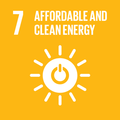Seawater drawn from Copenhagen’s harbour is distributed to cool commercial and industrial buildings in the Danish capital.
Copenhagen’s two district cooling facilities distribute and supply cold water to commercial and industrial buildings with large server rooms or where many people work or shop. The district cooling system uses seawater from the Copenhagen harbour throughout the year to cool the pipes in the system. During the winter months, seawater from the harbour is cold enough to eliminate the need for electricity in the cooling process. In summer, when the temperature of the harbour water exceeds 17 degrees Celsius, it is still used to increase the efficiency of other industrial processes, for example to chill cooling compressors.
Apart from being a clean and sustainable source of cooling, the system also takes up less space, and is less noisy, expensive and energy-intensive than conventional compressor-based air-conditioning.
We see a tremendous potential in district cooling, because it gives the customers a number of economic and environmental benefits.
Henrik Lorentsen Bøgeskov – CEO, Hofor Fjernkøling.
Why you should care
Most conventional cooling systems use large amounts of electricity, often generated from non-renewable sources, to cool buildings. The district cooling system in Copenhagen provides a sustainable alternative to the status quo. The system can cool 1.9 million square meters in Copenhagen, and is a step towards making the city CO2 neutral by 2025.
How the Global Goals are addressed

Affordable and Clean Energy
By using naturally cool harbor water gives you a clean and affordable method of district cooling, compared to energy-intensive air-conditioning.

Sustainable Cities and Communities
Cities that use district cooling instead of air-conditioning units for each building will save on energy costs and greenhouse gas emissions.

Climate Action
Heating and cooling commercial and industrial buildings accounts for 50% of the EU’s total energy consumption. This system is expected to reduce CO2 emissions by 30,000 tons p.a.


